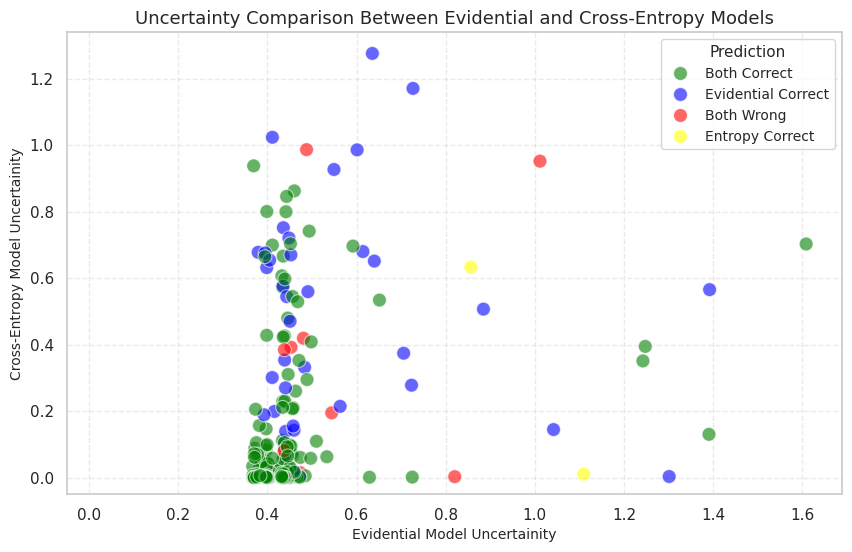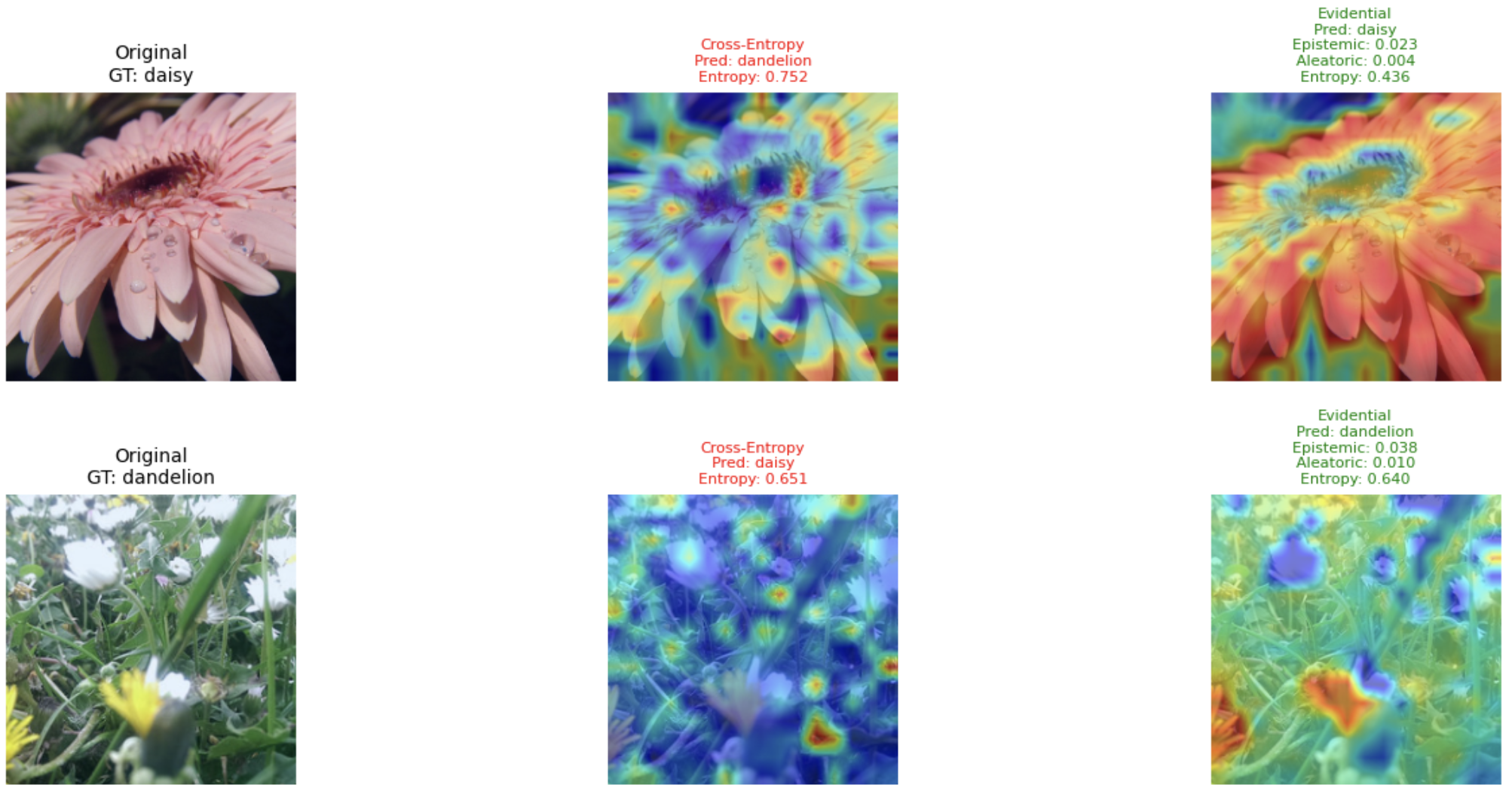Evidential Learning for Robust Classification
A deep learning project focused on uncertainty-aware classification using Dirichlet-based evidential models improving F1 score by %10.
📄 Read the full project report
📂 Code available at: https://github.com/amir-aghdam/evidential-classification
Deep neural networks are often overconfident and unaware of their own limitations, especially in uncertain or ambiguous situations. This project takes a bold step forward by applying evidential deep learning to visual classification — combining transformer-based representation learning with probabilistic uncertainty modeling.
We introduce a novel pipeline built on DINO v2 Vision Transformers, replacing standard classification heads with a Dirichlet-based evidential output. This empowers the model not only to predict, but to quantify how much it trusts its own decisions — an essential feature for safety-critical or fine-grained tasks.
🚀 Quick Highlight
Achieved +4.1% absolute accuracy gain and vastly improved uncertainty calibration over standard deep networks — showing promise for real-world deployment where reliability matters.
🌼 Dataset and Task
We validated our approach on a challenging fine-grained flower classification task, known for subtle inter-class differences. This serves as a perfect benchmark for testing uncertainty-aware methods.

🧠 Architecture and Training
We adapt a pretrained DINO v2 ViT-S/14 and append an evidential layer. The model is trained using an uncertainty-regularized evidential loss, allowing it to estimate both class prediction and confidence bounds. Our architecture adds an evidential head on top of a frozen DINO v2 encoder, trained with a KL-regularized loss function.
📊 Performance
| Metric | Cross-Entropy | Evidential |
|---|---|---|
| Accuracy | 94.55% | ⭐ 98.69% |
| Precision | 86.32% | 96.55% |
| Recall | 86.07% | 96.61% |
| F1 Score | 86.14% | 96.55% |
In addition to numerical gains, the model calibrates its uncertainty, lowering trust in incorrect predictions and raising confidence only when justified.

🎯 Visual Interpretability
Grad-CAM and t-SNE visualizations show that evidential models develop more semantically meaningful feature spaces and focus on more relevant image regions.


💡 Why This Matters
This work demonstrates that uncertainty isn’t just a bonus — it’s essential. By embedding calibrated confidence into model outputs, we build a foundation for safer, more responsible AI systems in domains like healthcare, robotics, autonomous driving, and scientific discovery, where “I don’t know” is often the most important answer.